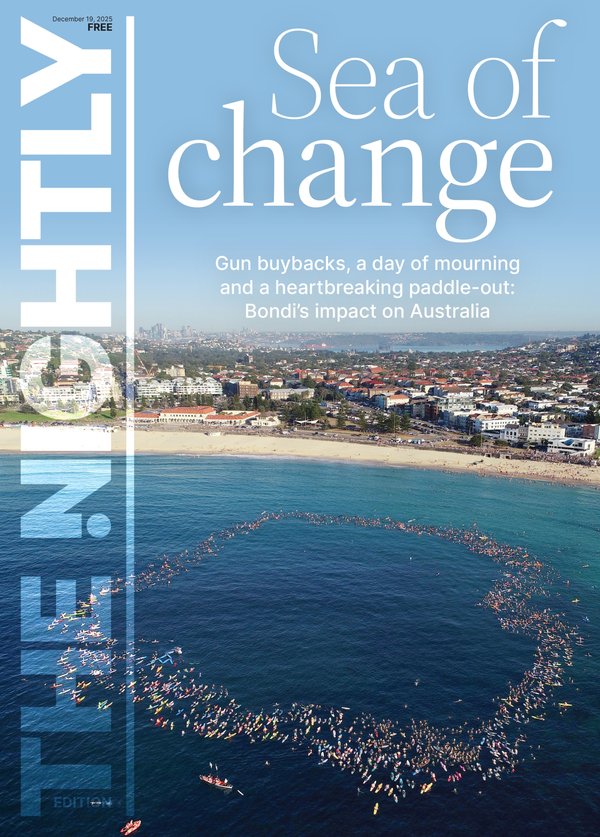ASIC warns fast-growing private credit sector to lift standards or prepare for regulatory intervention

Corporate cop ASIC has fired a warning shot across Australia’s private credit sector, declaring it must lift standards or prepare for regulatory intervention in a thunderbolt new report released on Monday.
The warning comes as leading finance experts expressed concerns that less-sophisticated retail investors underestimate the risk of capital losses in what’s now a $200 billion sector, as they’re seduced by the high-yields and illusion of limited risk.
“The risk is money is getting piled up fast into this asset class at the wrong time of the cycle,” said Chris Brycki, the founder of investment platform Stockspot. “And when things turn sour the retail investors who didn’t understand what the underlying risks are will be left holding the bag.”
Sign up to The Nightly's newsletters.
Get the first look at the digital newspaper, curated daily stories and breaking headlines delivered to your inbox.
By continuing you agree to our Terms and Privacy Policy.The sector involves dozens to hundreds of ASX-listed or private funds marketing high income returns to investors typically between 8 to 10 per cent per year, or more. Investments are normally made via the ASX, or superannuation and financial adviser channels that are used to fund loans to small-to-medium sized businesses.
But ASIC is worried retail investors don’t fully understand the investment risks these complex products present, with exposure to high-risk real estate development or other up-and-down industries such as hospitality.
On Monday, the regulator issued new findings to warn that it found some of the poorer practices in private credit today are potentially inconsistent with financial services laws and the regulator’s own guidance, including the requirement to provide financial services efficiently, honestly, and fairly, while avoiding misleading or deceptive statements.
“While the report highlights some encouraging practices, it also reveals concerning behaviours that fall short of market expectations and more importantly that are inconsistent with existing financial services laws,” said ASIC chairman Joe Longo on Monday. “With the pace of growth in size and reach of the domestic sector this becomes all the more important.”
The clampdown comes as ASIC put stop orders on certain La Trobe Financial funds last Friday, with access to the $20 billion non-bank lender’s La Trobe Direct online investment platform closed to investors since the regulator’s intervention.
“We do not hesitate to use ASIC’s regulatory and enforcement tools when we identify misconduct,” it said of its review into the sector on Monday. “We have already taken action, issuing stop orders on several target market determinations due to poor disclosure and distribution of retail private credit funds. We have also commenced enforcement investigations for instances of more egregious conduct.”
Industry’s problems
On Friday as part of its stop order, ASIC warned the ASX-listed La Trobe US Private Credit Fund involved investing in underlying loans with “an above average amount of risk and volatility or loss of principal.”
La Trobe attempted to sooth investors’ worries about being locked out of the La Trobe Direct online platform on the weekend. “We are working diligently to make this available to investors as a matter of urgency,” it said.
September has proven a tough month for the private credit sector, after Macquarie Group blocked its its wrap investment platform from being used to invest in three of the funds of local market leader Metrics Credit Partners.
This followed the decision of ratings agency Lonsec to downgrade certain Metrics funds on governance concerns, with the non-bank private credit pioneer said to oversee around $30 billion in loans to business borrowers.
Experts worried
“All this seems like early warning signs that this is an asset class not as healthy as people think,” said Mr Brycki.
Mr Brycki added many less-sophisticated retail investors underestimate the risk of capital losses in the sector.
“It’s like the analogy of picking up pennies in front of the steam roller, you can earn a high return when things are going well in the economic cycle and the businesses and property projects you’re giving the money to are able to pay back the interest, but inevitably there’s a part of the economic cycle where things turn south and these are the highest risk entities that you’re lending to and the banks won’t lend to for a reason.”
ASIC’s concerns
In Monday’s review paper, ASIC warned that the sector’s investment reporting, valuation practices, fee disclosures, and related party transaction governance still need improvement.
The regulator is also worried that Australia’s private credit market hasn’t been tested through a cyclical economic downturn, which can often led to significant impairments in the property construction and development sectors the private credit industry has heavy exposure too.
“ASIC expects meaningful action in response to these findings and will not hesitate to intervene where progress falls short,” Joe Longo ASIC’s chairman said on Monday.
ASIC is due to release a final report into the sector by November and warned the private credit sector it’s monitoring it for compliance with expected standards.
Globally the private credit industry is now believed to be worth more than $US3 trillion. It’s dominated by large Wall Street players that have stepped in to lend to businesses where traditional banks will refuse to largely due to the perceived credit or bad debt risk.
“It’s often hard for even sophisticated professional investors to unpack what the real risk of non-transparent illiquid and often opaque products like private credit really are,” said Mr Brycki.
In Australia, the major banks have generally pulled back on business lending since the Great Financial Crisis of 2009 partly as tighter prudential regulation means the return on invested capital is unattractive on a risk-adjusted basis versus home loan lending.

